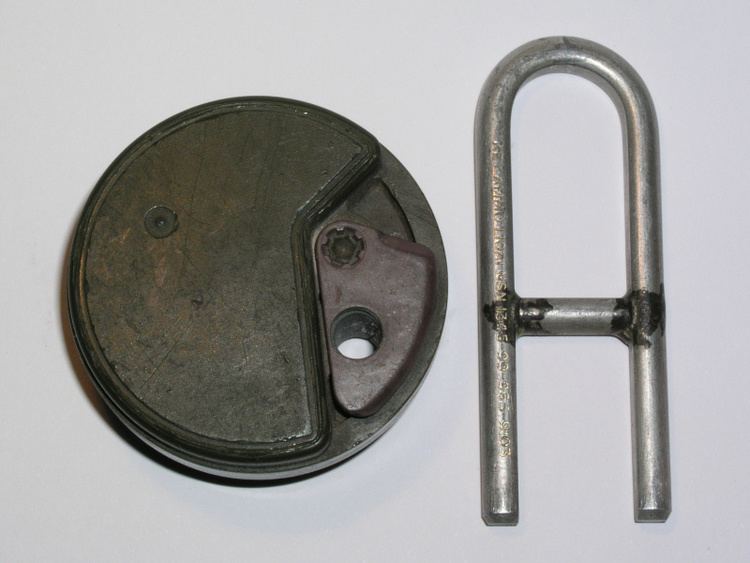Type Anti-personnel mine Used by United Kingdom | Place of origin United Kingdom Weight 136 grams (4.8 oz) | |
 | ||
Height 30 millimetres (1.2 in) Diameter 60 millimetres (2.4 in) | ||
The L10 Ranger Anti-Personnel Mine was a U.K. anti-personnel blast mine. It was used from the 1970s until recently.
It was designed to be used in conjunction with the L9 Bar Mine anti-tank mine, to make anti-tank minefields more difficult for enemy sappers to clear by hand. A FV432 would be fitted with a plough through which bar mines would be laid. A firing frame which held 18 clips of 4 barrels each would be fitted to the top of the vehicle. Each barrel contained 18 Ranger mines, for a total of 1296 mines. The frame could fire in any direction (although mines were not usually fired over the front of the vehicle). As each section of the anti-tank minefield was completed, several of the barrels would be fired. A small propelling charge would launch the mines, scattering them between 50m and 250m behind or to the side of the mine-laying vehicle. The act of launching the mine from the tube would release a spring-loaded safety catch and start a timer which would arm the mine after 30 seconds.
The mine was roughly the size of a tin of shoe polish, made of plastic and coloured olive green. Two inert training versions were available. One was bright orange to allow it to be easily spotted and recovered; the other was made from bio-degradable compressed peat.
The Ranger mine laying system could also be fitted to a four-tonne truck, Stalwart High Mobility Load Carrier and the combat support boat
In accordance with treaties banning the use of anti-personnel mines, the UK has destroyed all its stocks of L10s.
